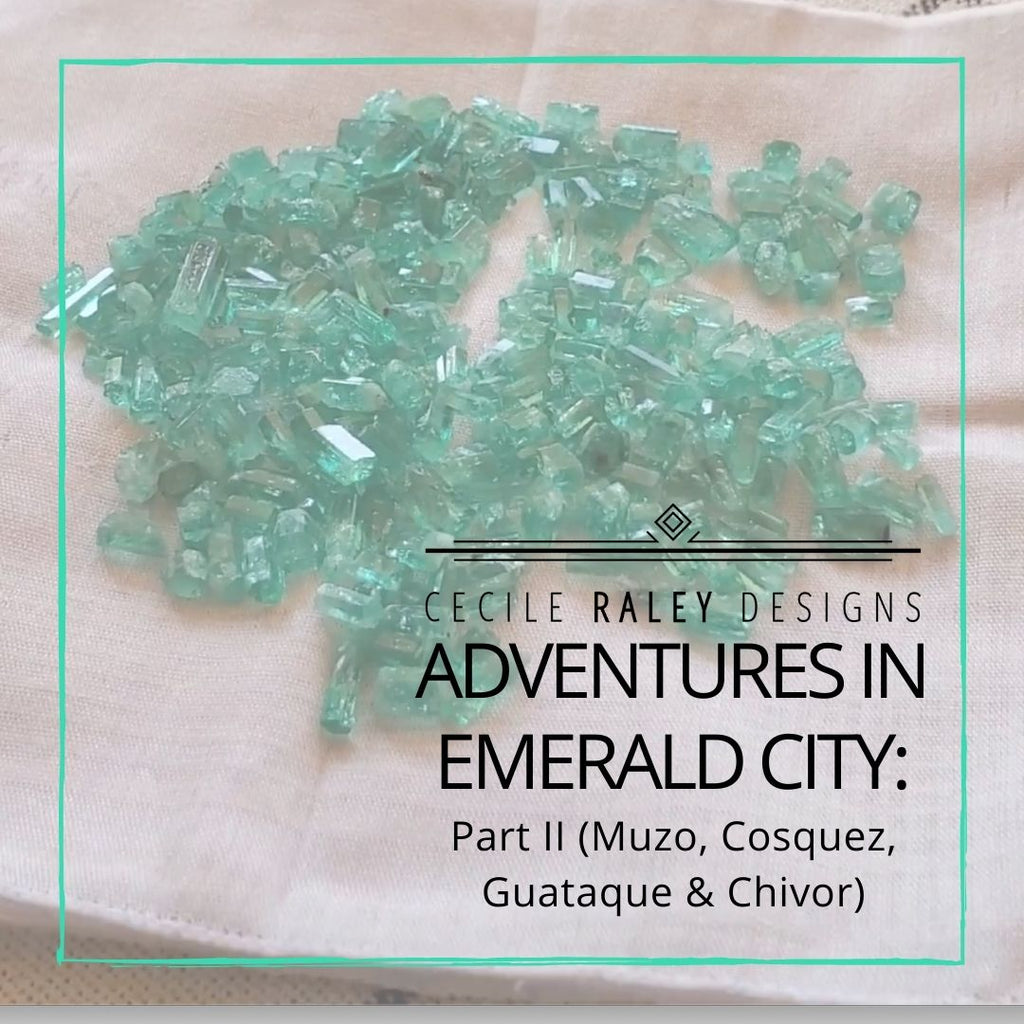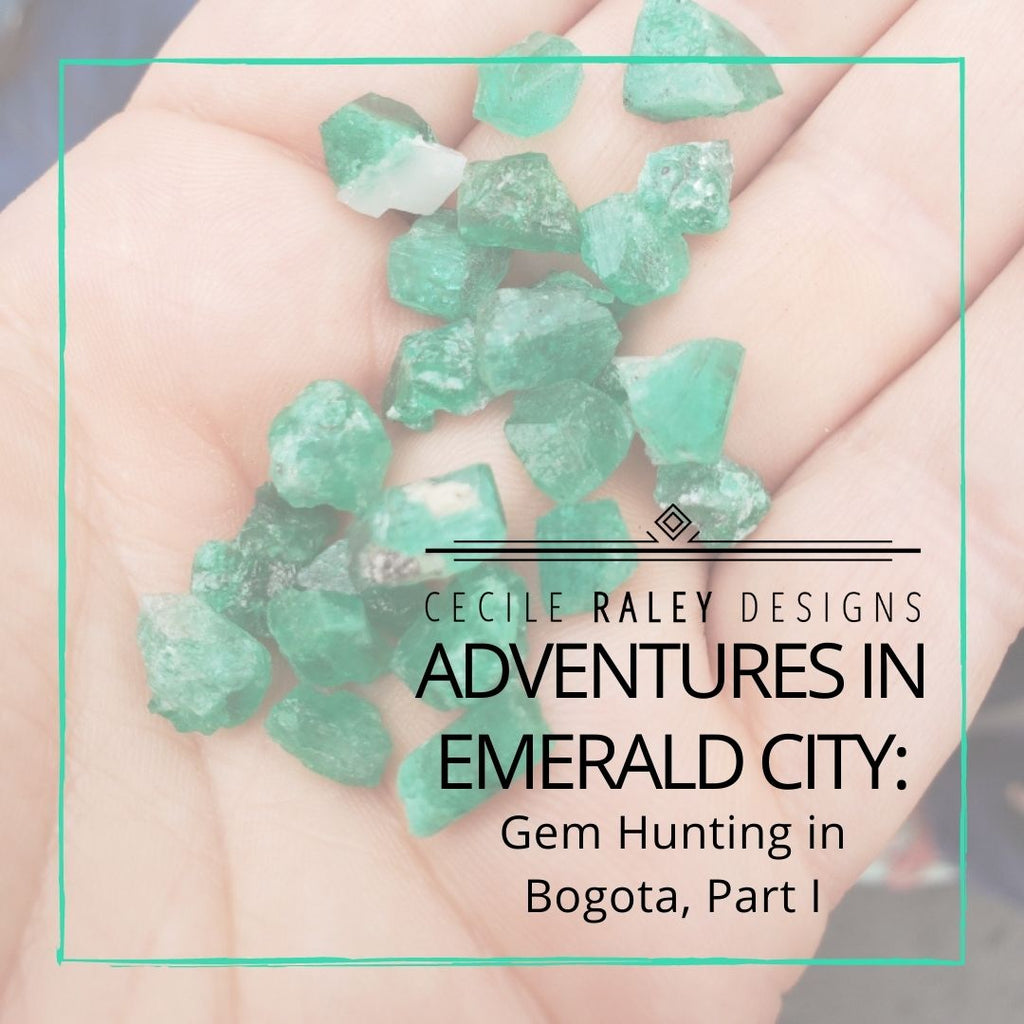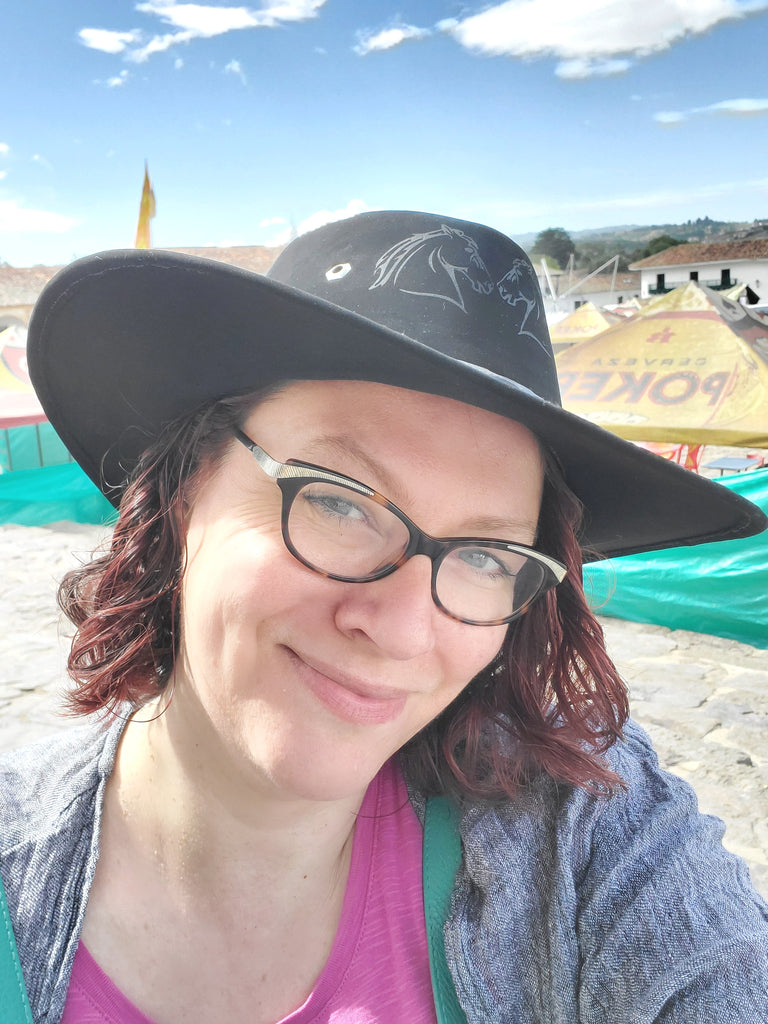Adventures in Emerald City, Part II (Muzo, Cosquez, Guataque & Chivor)
So here we were, the three of us, in the dark in a small foreign town, just following two total strangers into their shop, who are then joined by two additional strangers along the way. No one spoke English. After we entered, the owners locked up the shop after us. For a brief moment there, we all had this ominous feeling: did I make the wrong choice? The locals offered us chairs and we all sat down. Then they proceeded to show us lots of gemmy crystals in host rock, and the trading began. Jochen made some slightly higher introductory offers and bought a few pieces. The situation began to lighten up. This was just a regular sales meeting after all, despite the slightly mysterious context. Jochen then told our temporary hosts that he wanted to go to the town of Cosquez but didn’t know where the trading took place. Our hosts offered to take us. We agreed.
We then all had pleasant dinner together at a small local arepas place, and we paid for the food as an opening gesture in return for their hospitality. They accepted with thanks but offered to pay for breakfast the next day. They then brought us some local scarves that would identify us as in the industry and as buyers, and requested that we wear those the next day. Oh, and they drove ahead of us the way back to the hotel up the hill (I wondered at the time if they wanted to verify our whereabouts…). This turned out to be helpful though, as we might have gotten lost in the dim street lights of Muzo.

Promptly at 5:30 in the morning, I got my wakeup text from Lucila, the female shop owner. I woke up a very groggy Diana not used to early morning travel, and at 6:00 we were – more or less – ready to roll. Lucila, and who turned out to be her brother Jose, showed up in their 4 wheel drive together with their two companions (one of whom might have been Lucila’s husband but you know I never did ask…). Jose joined us in our vehicle so he could chat with us, and together we drove for what I’d say was about 1.5 hours on dirt roads to a very small town (a strip of a few houses really) to have breakfast. The restaurant, or rather, the tiny kitchen with a few outdoor chairs, was already expecting us, and we were offered sopa with chicken and yukka, maduros, rice and smoked beef (delicious). The freshly made hot sauce took Diana’s speech away for a few minutes, but generally, on these trips we all thoroughly enjoy a hearty and spicy breakfast, and lots of coffee too. It was arranged that we’d be back for lunch at the same place at around 2 p.m. on the way home - to have fish grilled in banana leaves, chicken, and okra cooked in scrambled eggs.

It was not far of a drive from the breakfast place until we reached another small gathering of buildings. “This is it,” we were told - the Cosquez trading post. There were some covered areas with plastic chairs and tables, a sort of counter with coffee and offerings of some chilled beverages. This is pretty standard in tropical areas that experience a lot of rain. Life takes place outdoors, during daylight, with the covered areas protecting you from the elements. We ordered some café con leche and Coke™ and sat down with our new “family.” The latter had (obviously) called ahead and within minutes, we were surrounded by sellers with "gangas" (minerals in host rock). There were no gems for me here as cutting takes place in Muzo, Chivor, Bogota or the nearby town. So I just got to watch and have fun.
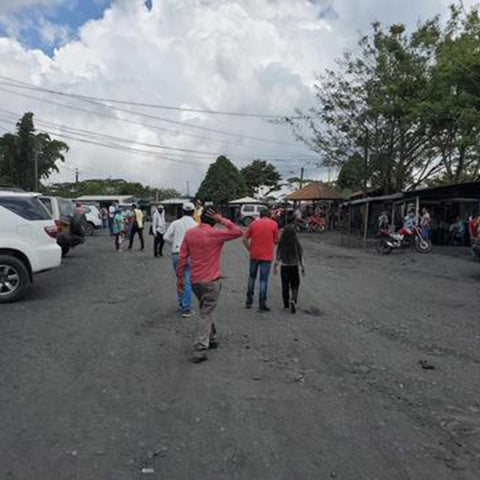
Offers were made quickly and under the eyes of a couple of dozen locals. Jochen rejected some of them, accepted others, made jokes; the local chatter being interrupted by silence as numbers were called out and the seller or Jochen were thinking and calculating. Nobody wanted to miss a thing! After about 2 hours the selling started to wind down. This is typical as by then one has usually seen everything that’s on offer that week, or day, or month depending on what people have saved up at home.

Many of the local mines are owned by several people or groups, or a group and the town, or an investor and some locals. Profits are usually shared in various percentages. "Gangas" are often locally traded as they are not yet processed into gems or won’t ever be because they are too small or included. But that makes it a heaven for collectors. If one selects well, one can make good money in the trade.
Naturally, our “family” also collected a brokerage fee for each of the trades that Jochen made. That was understood although neither side mentioned it – after all their services did not come free. Lucila and Jose were in many ways invaluable as we would never have found this place. Initially their fee seemed high from what I could tell (about half). Over time though, and as Jochen’s money dwindled and people still wanted to trade, the fee seemed to be shrinking into the acceptable territory of 20%. Nonetheless for Lucila, Jose and crew, we were something of a jackpot, as you could almost say we fell out of the sky into their open but helpful arms. By far most traders that come to Muzo are Colombian.

After the trading ended, we headed back for lunch. During the lunch break there was a short but heavy downpour, and Jose got worried about the road conditions ahead. He wanted one of his friends to drive instead of Jochen but Jochen is quite experience at this and refused. Driving was indeed more treacherous as the black shale dirt is very loose and the road takes many turns along the steep mountainside – I had to close my eyes a few times. Toward the end of the ride, Jose included a few more stops down unknown roads to see “relatives” who had more "gangas". Each time our engine started, more people came running out of their houses, showing their "gangas" stored in towels, buckets and small pots to see if they’d fetch a few bucks. It was getting quite comical, but also quite late.

We reached Muzo just before dark, and I was exhausted. Lucila and Jose wanted to meet us again the next morning but we said “no.” We really wanted a chance to explore on our own, without the brokerage fee and possibly getting cheaper deals, which meant going to the marketplace alone. But Jose and Lucila were well aware of that. We eventually agreed to meet in the afternoon and we spent the morning just sleeping in and working online. As agreed, the afternoon was spent with making more purchases in Jose’s office. Jose is a gem cutter, so I bought a few pieces from his shop, mostly Muzo crystal, which is lighter green emerald.
The morning after that, we set off to the next leg of our trip, this time much earlier. Back we went, initially 20 miles of hairpin curves on dirt road, then ascending from 800 to 3000 meters and going back down, across a bit of highway and then over the Bogota plateau to Guateque. By then it was 4 p.m. and we decided to call it for the day, as the road to Chivor is also a dirt road alongside the mountain and those roads cannot be driven on after dark. At El Gran Hotel Central in Guateque, we got two miniature style rooms but with a view AND with hot water.

We went out for dinner just before the restaurants closed at 5 p.m. - in some towns the restaurants close early to save electricity. I don’t recall this being as much of an issue in 2019, so I am guessing that due to the lock downs there was a significant downturn in business.



People in countries where not everyone can afford electricity spend their working lives between sunrise (6 am ish near the equator) and sundown (6 pm-ish). Once you get used to it, it’s quite nice, as this is our natural pattern anyway and we produce sleep and wake hormones according to the light. Workers get up before sunrise, may get to their job before breakfast, and break for a later breakfast and a late lunch, then for dinner it’s just a bit of bread and perhaps some cerveza (beer). 8 p.m. is bedtime.
I can’t say that we ever really adjusted to this time table but we did our best. In any case, we were up for a 7:30 breakfast in Guateque, with a view of the mountains to die for. Huevos rancheros, a large corn tamale stuffed with all kinds of meats and egg, fresh guarana and mango juice (unsweetened), fruta, and fresh baked bread were the morning feast. Plus hot cocoa and coffee!
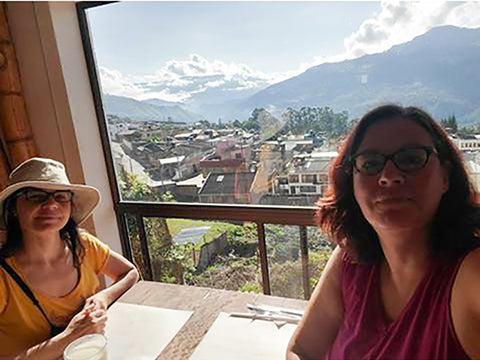

Right after breakfast, we set out for the 90 minute drive to Chivor. The road took us along a recently paved road with many tunnels heading southwest, then south across the Chivor dam for which Jochen took the first measurements in the 1970s. After another (very wet) and unpaved tunnel that opened to an amazing waterfall, we hit dirt road for the last hour or so. It was a gorgeous drive.



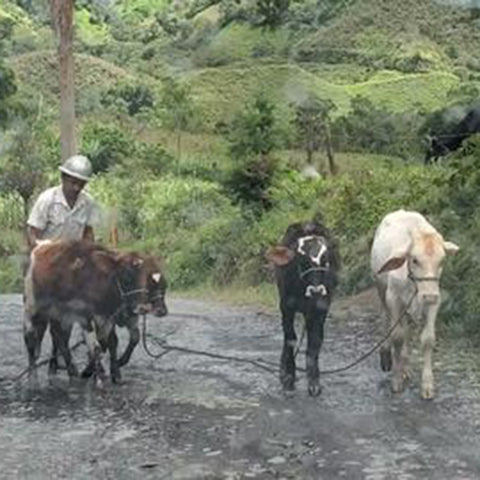

We had tried to call ahead for a hotel in Chivor, a small town of perhaps 800 souls. Although Google maps listed the hotel we used previously, Hotel el Klein, we couldn’t find a phone number for it that worked. The hotel next to it which I had remembered was Hostal Anni never answered the phone. Once we pulled into town, we realized why there was no number for El Klein. It was gone, gone, the whole building razed to the ground. It was unsurprising, really as it was half fallen in in 2019.
Hostal Anni was still there though, and they also had space for us; and, to our surprise, they had hot water heaters installed in the showers. We were offered two rooms, one with an inside bathroom and three beds, which we turned into our dorm style bedroom, and an adjacent room which Jochen decided was the office. That’s where he spread his goods from Muzo and took his measurements, photos, and made the listings in his Shopify when internet was speediest, at 4 a.m., while we slept.


In Chivor, the experience we had in Muzo somewhat repeated itself. We walked down the trading street (or just “the street”), and were quickly ushered into someone’s house for gangas and even a few small faceted emeralds. We bought a few things but then quickly extracted ourselves and sat down in a café. Soon, a few traders showed up. Not that many though, not as many as in Muzo. Over time I was shown some faceted pieces but at higher prices than I expected. I did buy a small cab and the cutest little briolette from a cutter named Herman.
We spent next morning having a hearty breakfast and making a few last minute deals. The 4 ½ hour drive back that turned into 6 with traffic. On the whole I found the traffic not as bad as in 2019 though, and of course the economic recovery is not like ours.
It did seem that many of the working people in Bogota seem to be immunized, and vaccines readily available at this point. Mask rules are still strictly enforced, however, even outdoors. Once, in Muzo, we were politely encouraged to please pull up our masks. We hadn’t considered that many people there had not yet had the opportunity to be immunized and COVID testing was not as available.
Back in Bogota we had just a couple of days left to rest up, finalize business. We even used the hotel spa! A connection we made in Muzo met us at our hotel in Bogota and I selected some amazing pieces, currently at GIA for batch testing the level of treatment. We also met up again with Diana in the emerald shop. This shop specialized in Chivor gems and they had sourced quite a collection of lovelies for me to go through. My favorite purchase was a large, possibly no oil Chivor baguette that weighs four carats. This gem is right now getting the full works at GIA. And I bought another locally certified no oil emerald cut, also in the lab right now, from a vendor who also had some nice pieces in 2019. It always makes me happy when I can strike up business as a repeat buyer.
And yes, of course. I will go back!


